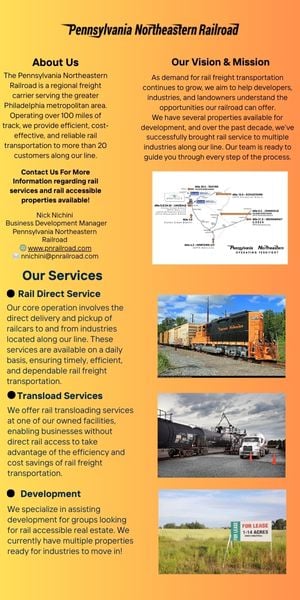Stairs on the Rise

Monumental stairs can inspire greater interaction, reduce energy costs, and improve employee health and fitness.
In the wake of COVID-19, workplaces are presented with a unique opportunity to shape the future of corporate culture and to use physical space to foster a sense of community and innovation that can’t be offered when working from home. Building elements that align with the goals of active, sustainable and universal design have the potential to play a crucial role in post-pandemic commercial real estate.
COVID-19 has challenged vertical transportation strategies in buildings, which have historically relied on elevators. Ongoing concerns about physical distancing and touching surfaces mean that people may be reluctant to use elevators. A well-dimensioned featured stair offers enough space for people to both ascend and descend simultaneously, giving occupants more room to move compared to a narrow fire escape or elevator.
“COVID-19 noticeably accelerated the trend of monumental stairs in offices and other commercial spaces,” said Jim Admiraal, executive vice president of sales and preconstruction at Synergi, a national stair design-led subcontractor. “We saw an immediate spike in design plans featuring stairs as a primary vertical mode of transport for major projects all over the U.S.”
Beyond COVID-19
Pandemic-related concerns aren’t the only reasons stairs are becoming a prominent consideration in buildings, said Hansoo Kim, principal and design director at architecture firm Gensler.
“Architectural staircases have been a trend in projects going back several years, as companies aim to make workplaces healthier and encourage movement,” he said. “The pandemic has brought an even greater focus on health and wellness at work, so we expect to see that trend continue.”
Extending far beyond hygiene and social distancing guidelines, the COVID-19 crisis has illuminated a wider point about workplace wellness standards. Positive and engaging work cultures have a direct impact on performance, and face-to-face interactions are by far the most important activity in an office, according to a recent Harvard Business Review article. Because of that, companies should examine whether the design of their workspaces helps or hurts performance.
“Accidental collisions” — impromptu conversations that lead to creative collaboration — are key to innovation and play a crucial role in workplace satisfaction, according to Work Design’s article “How to Create More Collisions in Your Workplace.” These chance meetings encourage employees to connect in ways they might not otherwise and can have surprisingly positive results. These unexpected conversations create opportunities for collaboration, and that kind of engagement pays for itself.
“We’re acutely aware of the importance of good staircase design; we’re working to make stairs more prominent in our building design to encourage people to take advantage and reap the benefits,” said Brian Collins, who leads Microsoft’s Real Estate and Facilities Change Management Program. “We know stairs offer the benefits of being healthier and more mobile in the workplace, but they are also a tool to drive connections and conversations between employees they see and meet on the stairs.”
A Way to Step Up Physical Activity
The role building elements play in encouraging physical activity depends largely on their design, according to a recent NPR article, “One Step to Combat Obesity: Make Stairs More Attractive.” The design of stairs can either promote or deter activity through their availability, convenience, desirability, safety and comfort. Poorly placed stairs, non-ergonomic design and elevators are just a few of the features that not only discourage physical activity but potentially neutralize other features designed to promote it.
Activity-friendly buildings can be created by integrating active design philosophies into a building’s circulation systems — especially its stairs and elevators. Because stairs are already present in almost every building and readily used without presenting any major lifestyle changes, they have potential for accessible, effective and economical impacts on health. According to a study published by the American Journal of Preventative Medicine, seven minutes of stair climbing a day over 10 years halves the risk of a heart attack. The same study also found that just two minutes of stair climbing a day was enough to offset the average American’s middle-age weight gain of one pound a year.
Building users are looking to be more active at work, with many owners now obtaining Fitwel and WELL accreditation for their buildings. Prominently featuring and giving people access to stairs is a key aspect of WELL; it encourages occupants to move about, socialize and stay fit. WELL Fitness Feature 64, for example, recognizes designs that encourage workers to be active indoors with “accessible, safe, and visually appealing stairs, entryways, and corridors.”
Design strategies that improve health (active design) also tend to benefit the environment. For example, elevators and other conveying systems can account for up to 10% of a building’s energy consumption; decreasing their use creates significant energy savings. Further energy is conserved when open stairs double as a lightwell, illuminating spaces that would otherwise be dark.
Because not everyone can easily navigate stairs — consider wheelchairs, strollers and heavy packages, for example — monumental stairs may seem counterintuitive to accessibility. Americans with Disabilities Act (ADA) guidelines and universal design strategies generally focus on elevator use as the primary means of vertical circulation unless there is an emergency. Most building codes regulate stairs as the primary means of emergency egress while discouraging elevator use for emergency evacuations.
Accessibility Considerations
However, an integrated vertical circulation system incorporating stairs and elevators can enhance accessibility for both ambulatory and mobility-challenged occupants. Buildings that feature stairs as a primary vertical pathway means occupants will be more familiar with and likely to use stairs in the event of an emergency. That will leave more elevators available for those who rely on them.
“In a post-pandemic world, staircases also provide an alternative to small elevator cars, which may have reduced capacity or be prioritized for those who cannot use stairs,” Kim said.
The stairs themselves can be designed to improve usability for all those who make use of them.
“We want to ensure our stair design is accessible, so we’re including tactile surfaces at each stair landing with high-contrast stair nosing to aid people navigating our workplaces who may be blind or have low vision,” said Collins. “We’re also using continuously graspable stairway handrailing to help users navigate stairs more safely with handrails on both sides of the stairs for bidirectional travel.”
While the recent “rediscovery” of interconnecting stairs as a design feature was catalyzed by COVID-19’s social distancing guidelines, stairs are a building tool that meet the goals of many prominent design trends. Increases in stair use can have positive health and lifestyle effects, create a more sustainable future, and improve accessibility for all building occupants when integrated with elevators.
Shantala Weiss is the senior marketing manager with Synergi.
Monumental Staircases in ActionLovett Commercial is showcasing three monumental staircases in three separate atriums in its Post Houston project, which is a redevelopment of the former Barbara Jordan Post Office in Houston. Despite featuring 40,000 square feet of available space in the building’s food hall, staircase design considerations for the atriums prioritized maximizing the allotted ground level space for the roughly 30 food and retail vendor and kiosks anticipated to operate within it. The resulting “O” staircase is optimized to fit within a relatively small footprint, and its double-helix design lands double the impact in terms of vertical mobility for occupants — just in time for its unveiling to the public in a post-pandemic world. A spokesperson for Lovett Commercial shares some cost and design considerations for building Post Houston’s monumental staircases:
|





